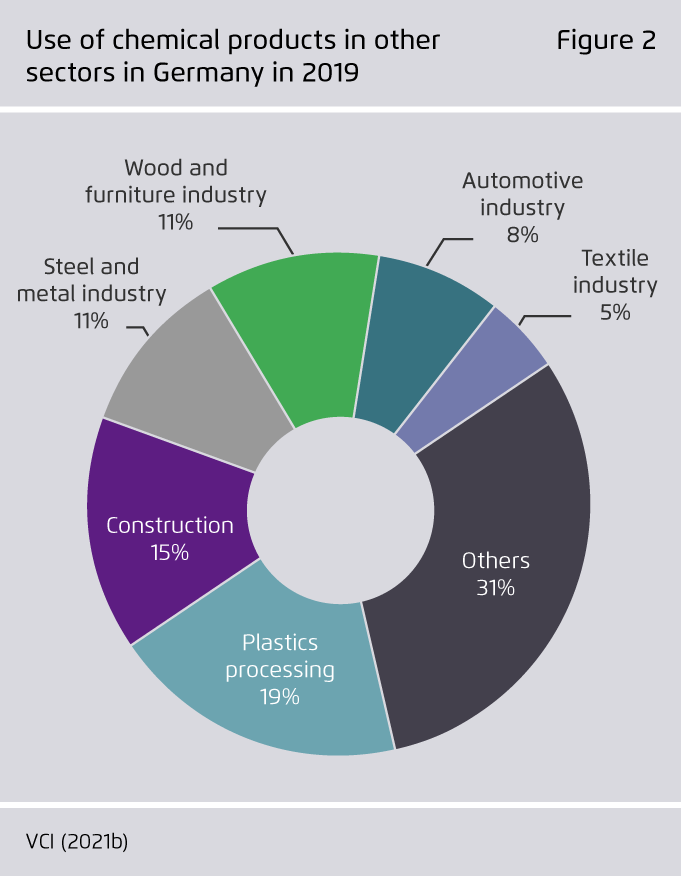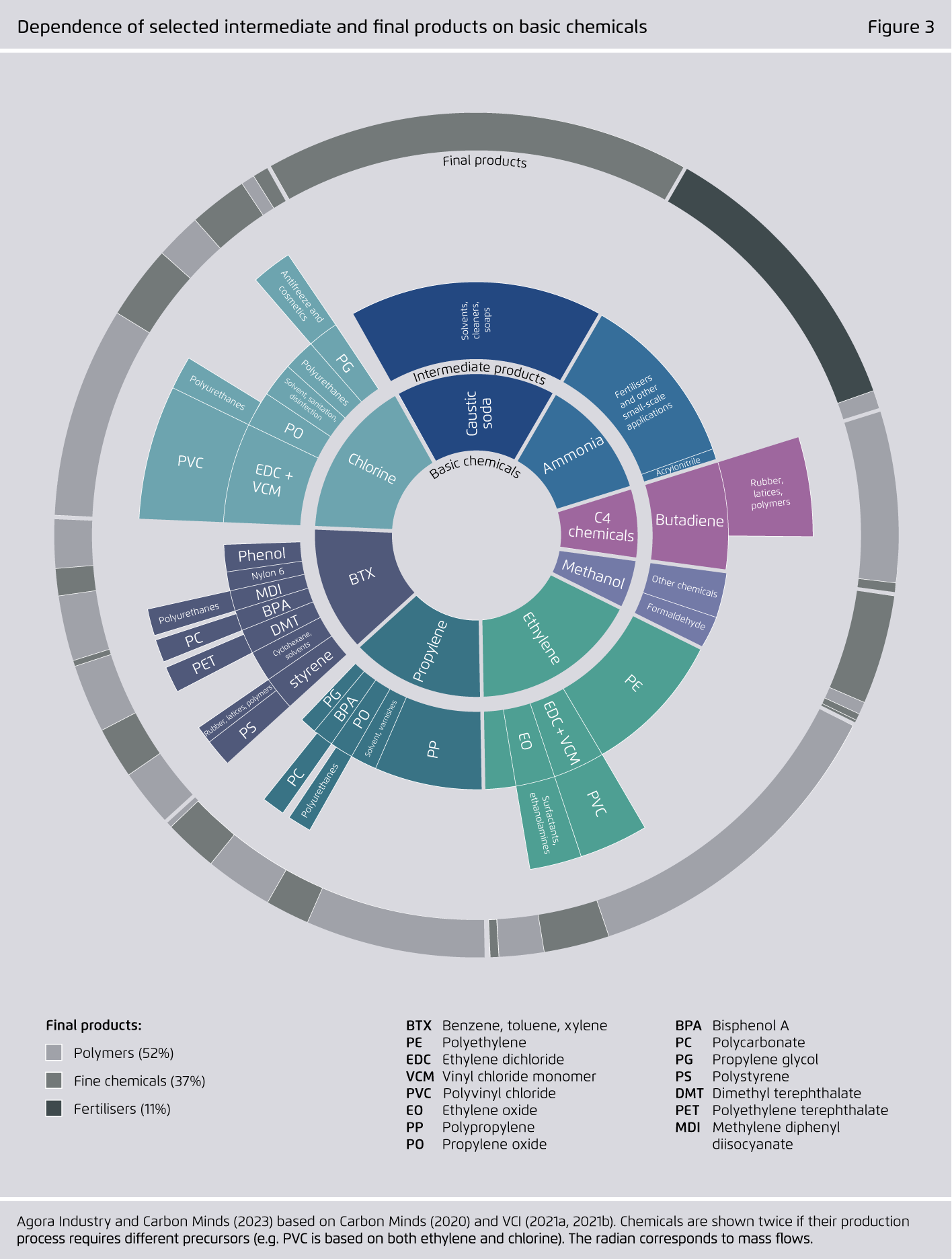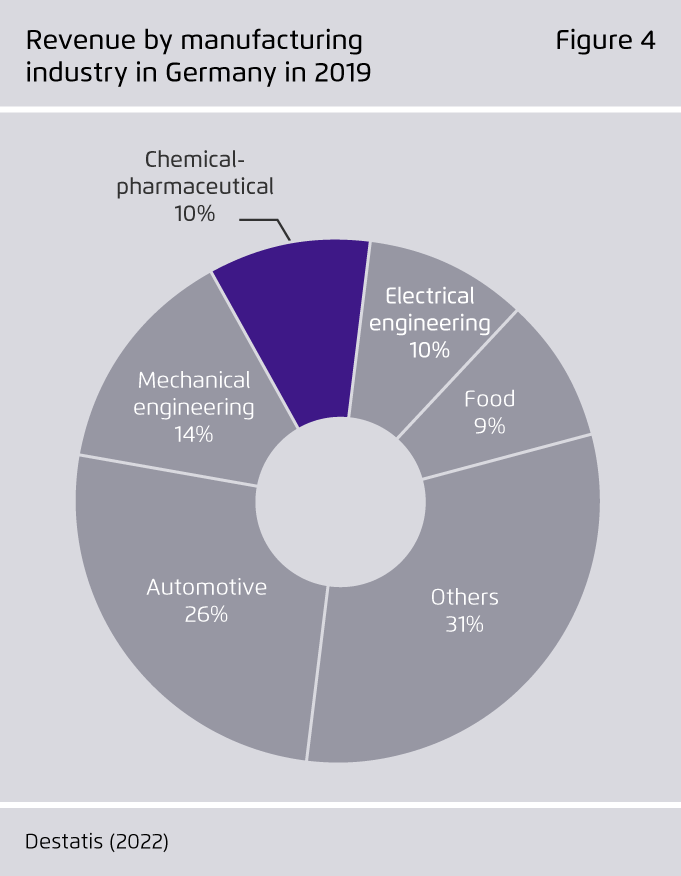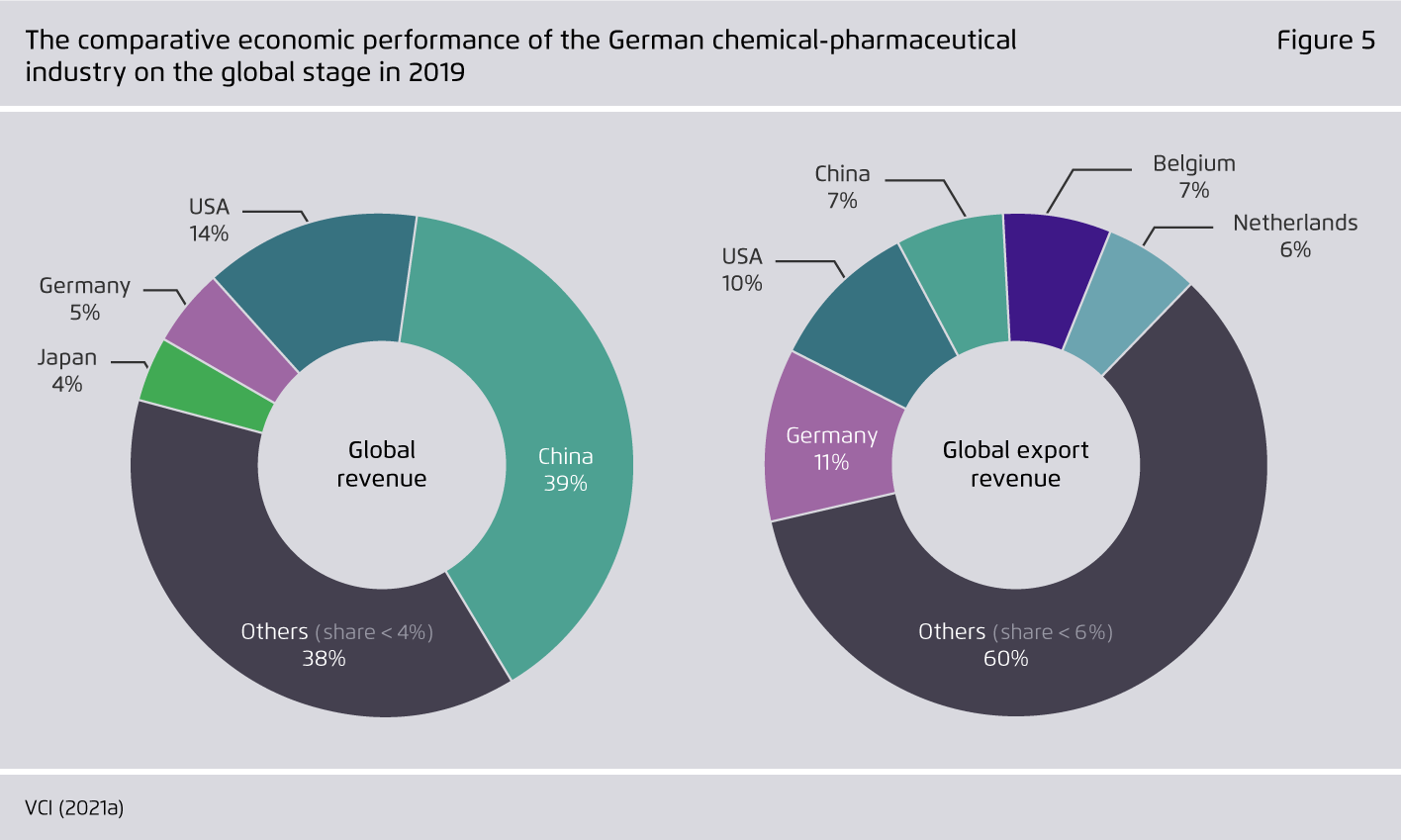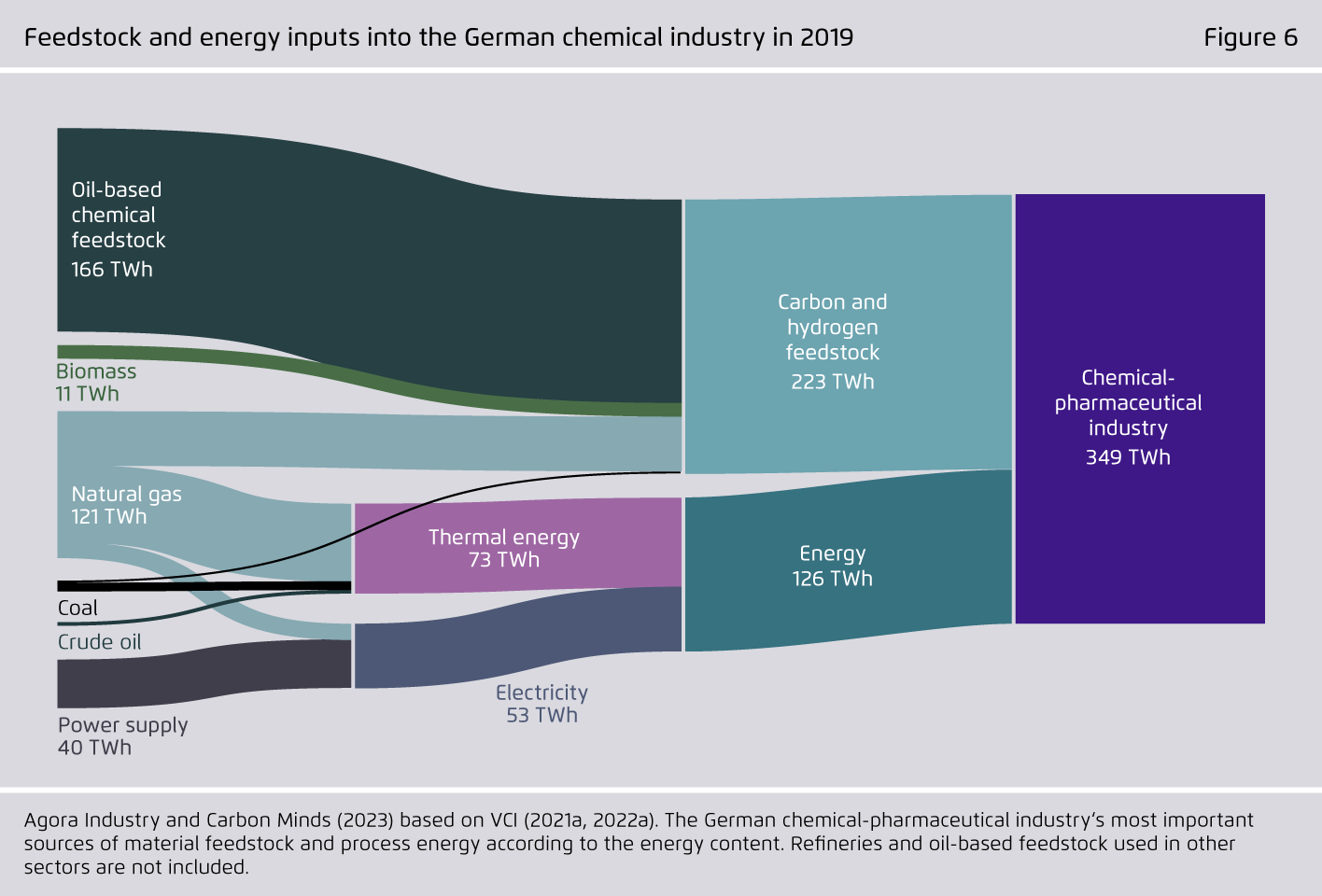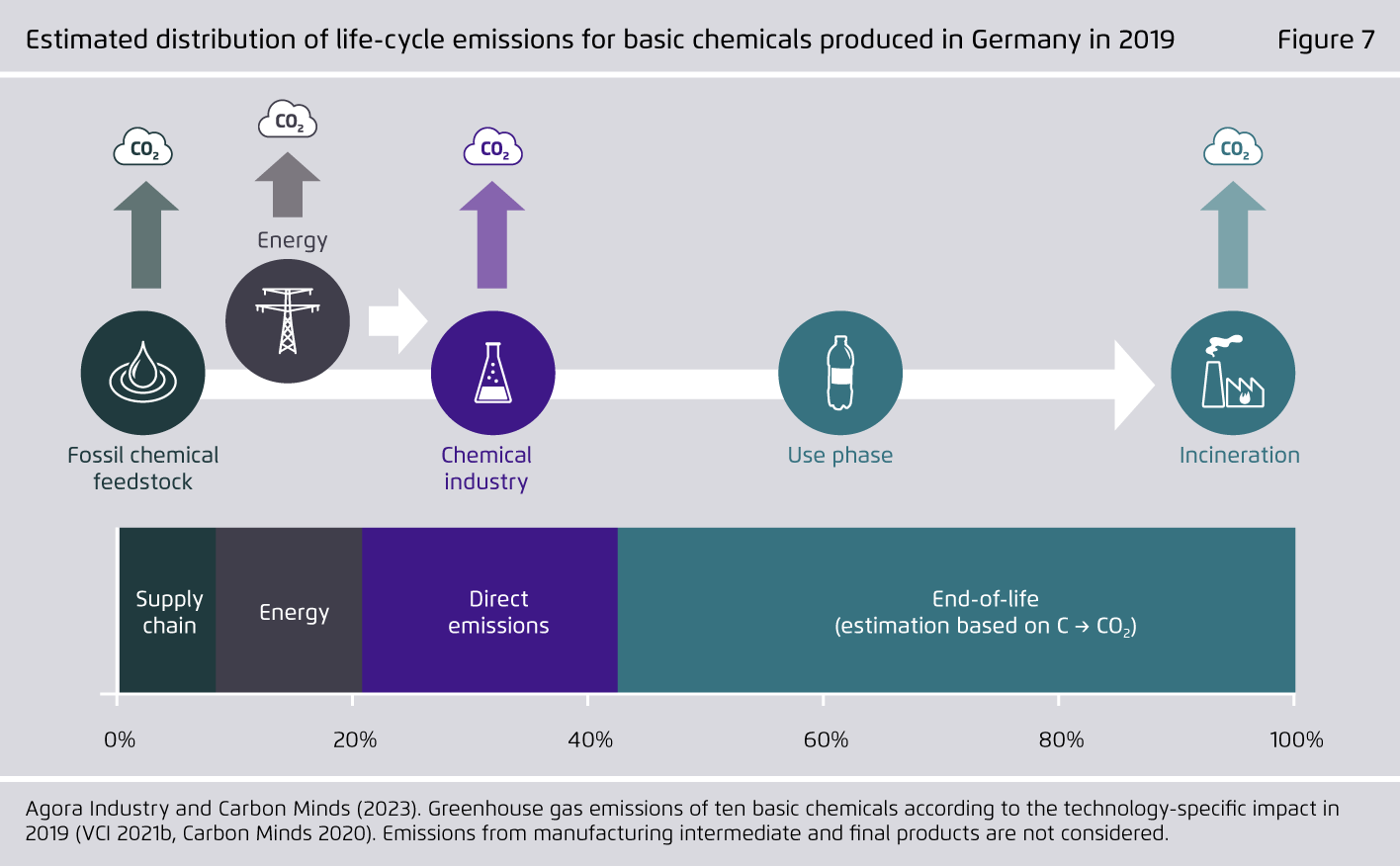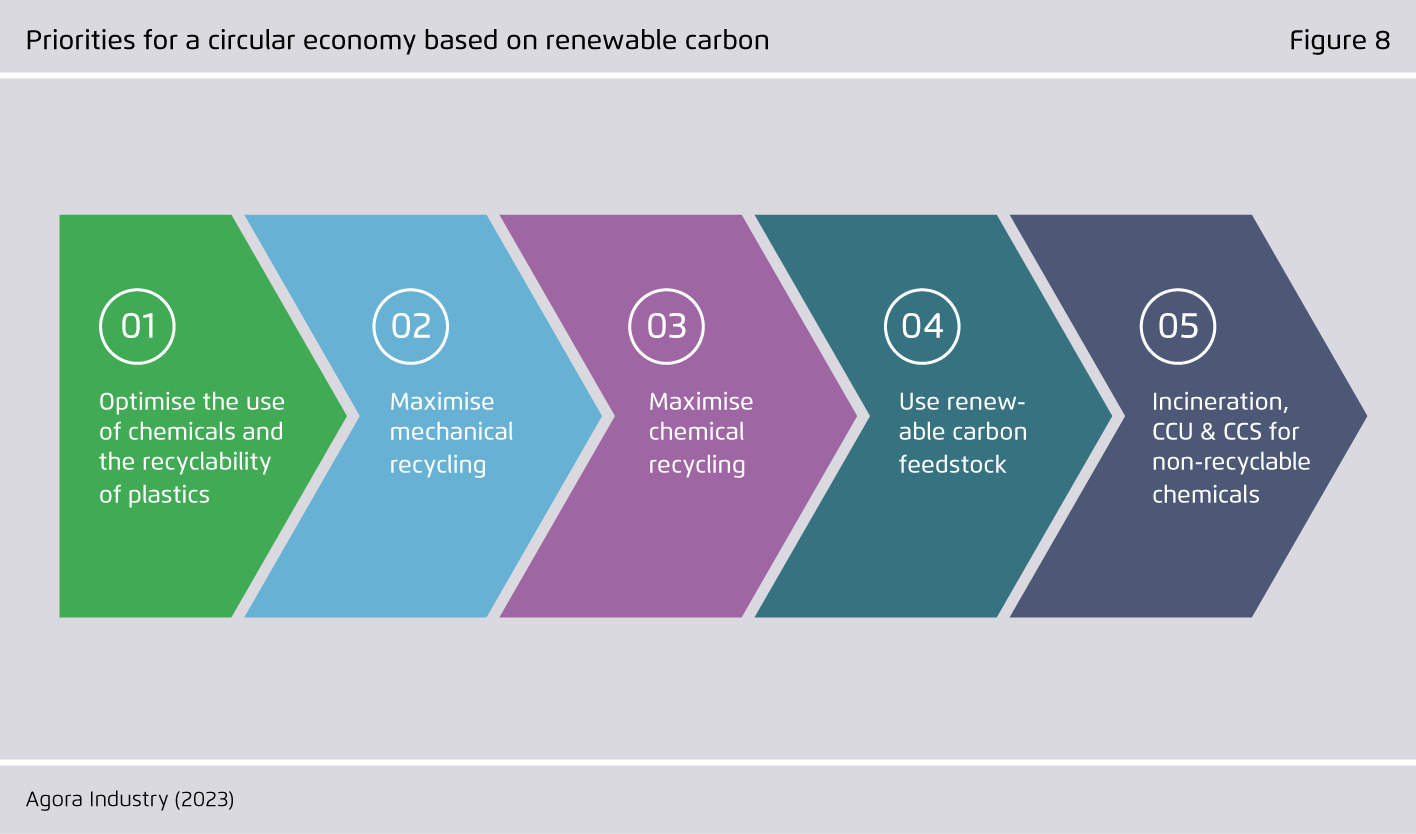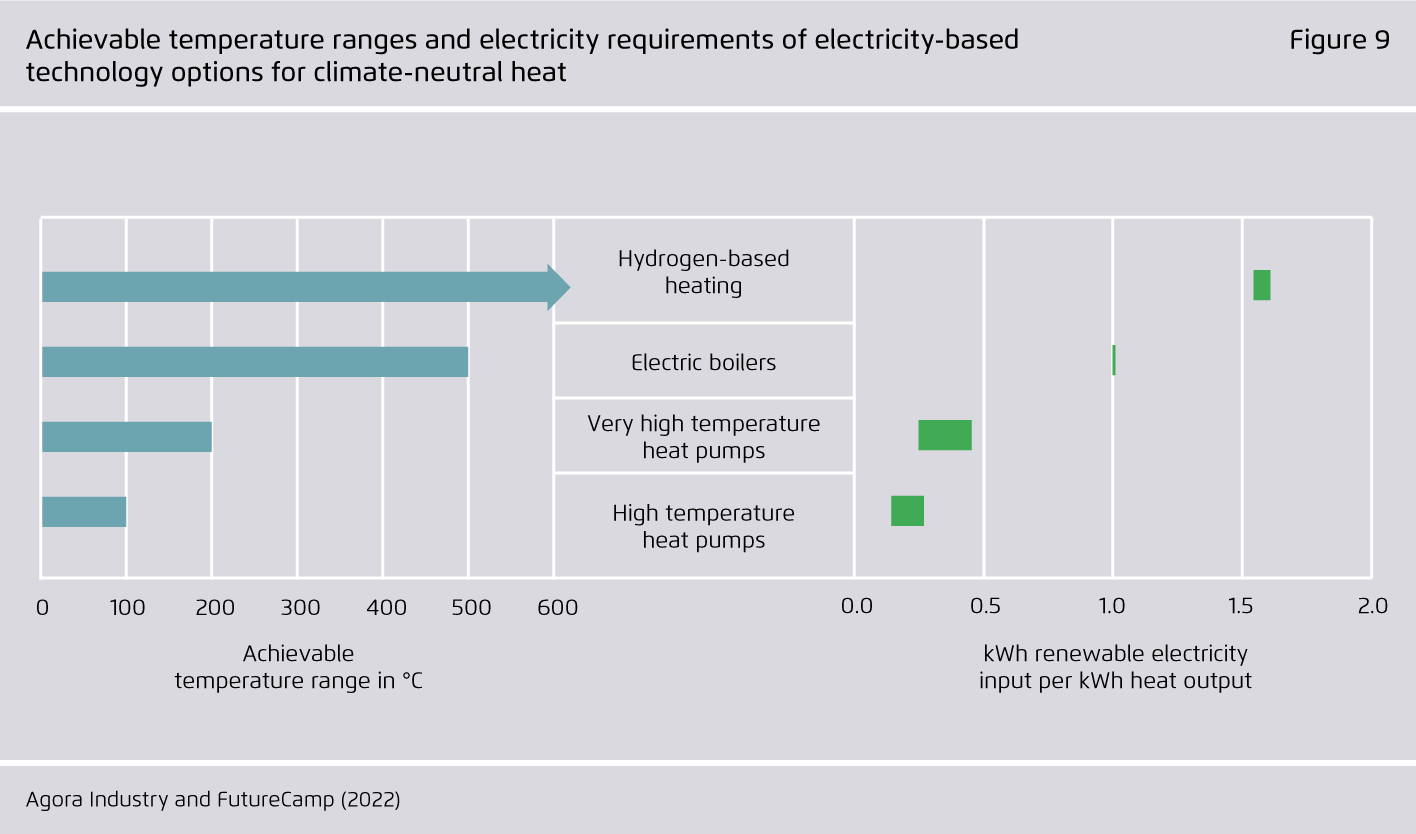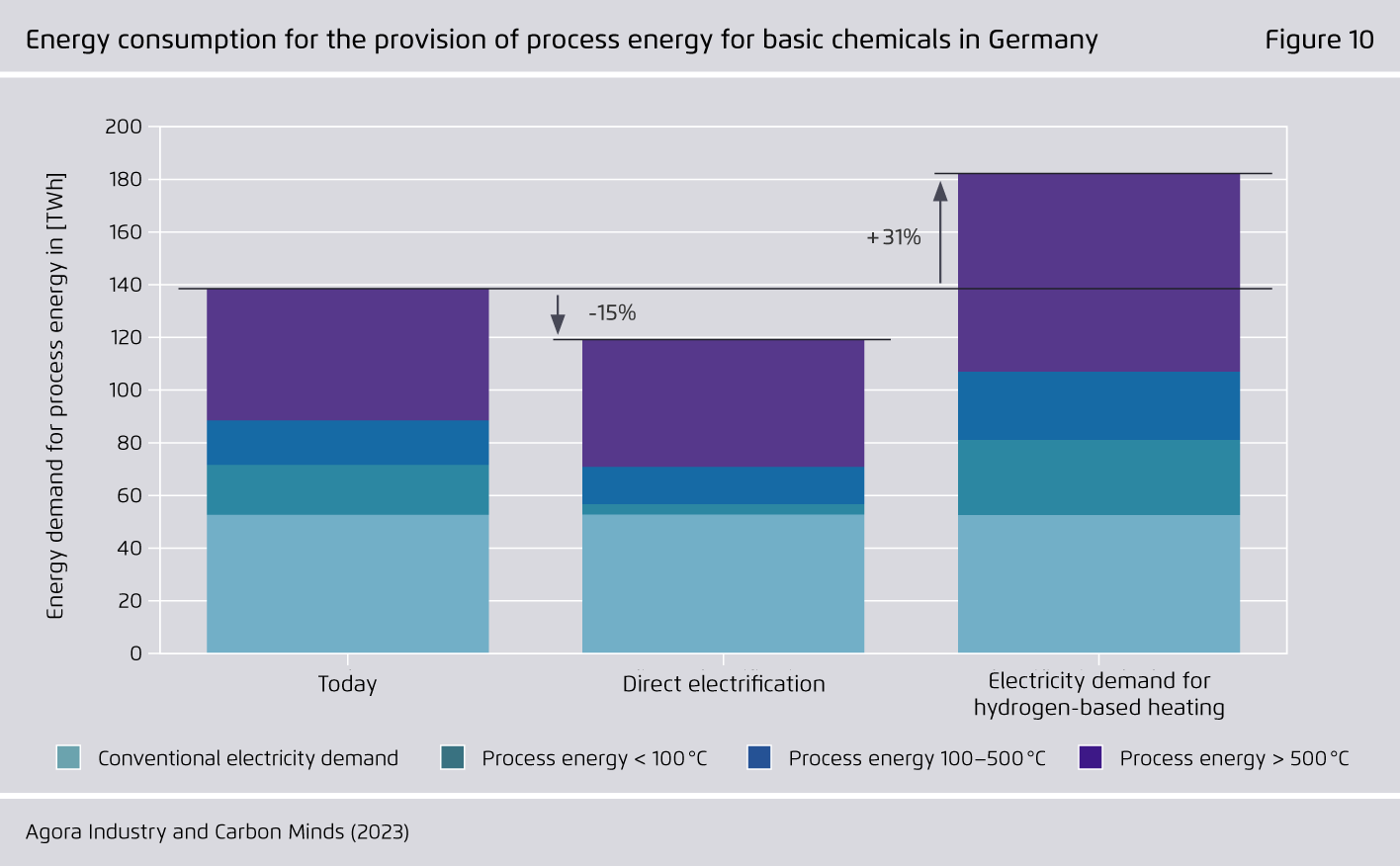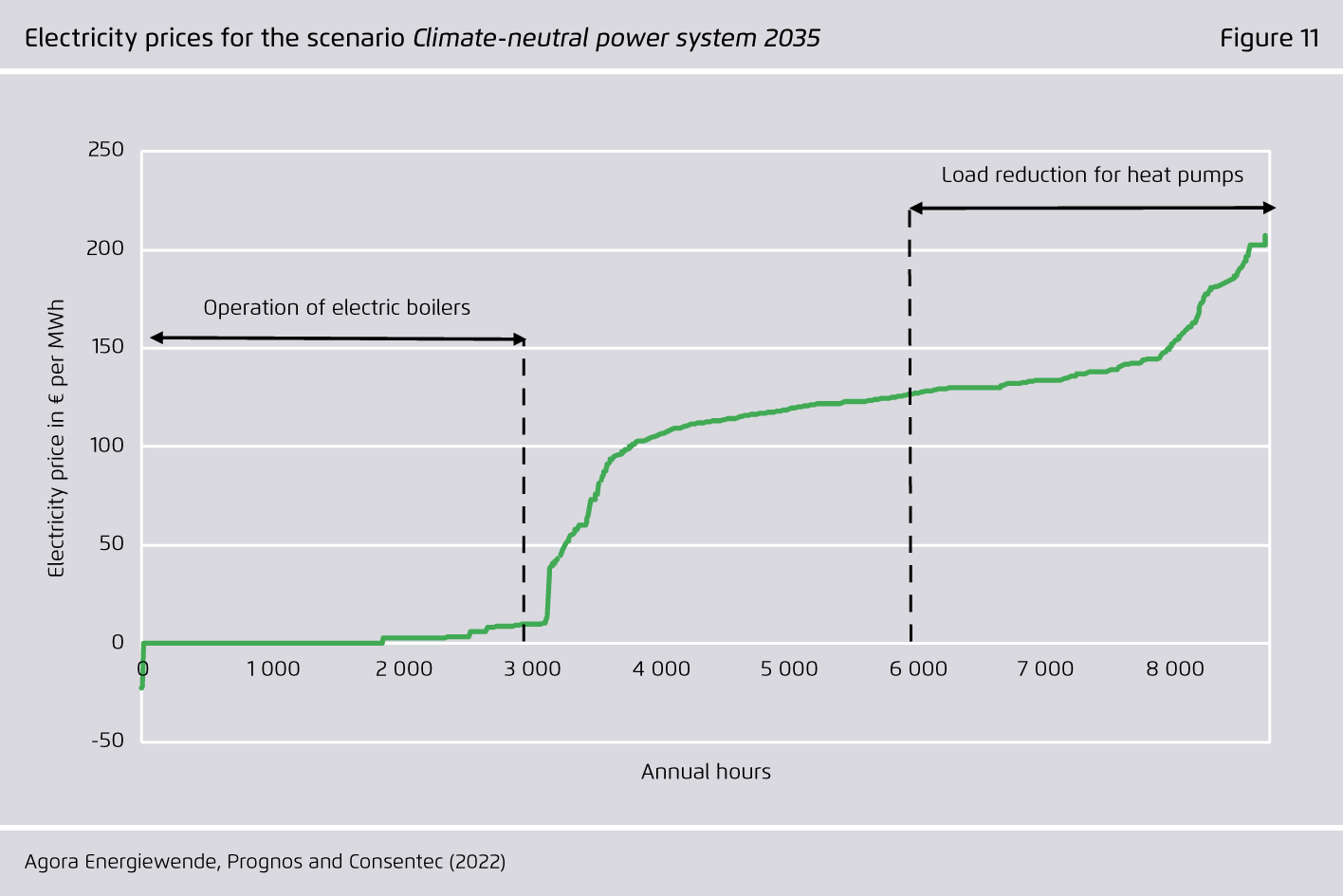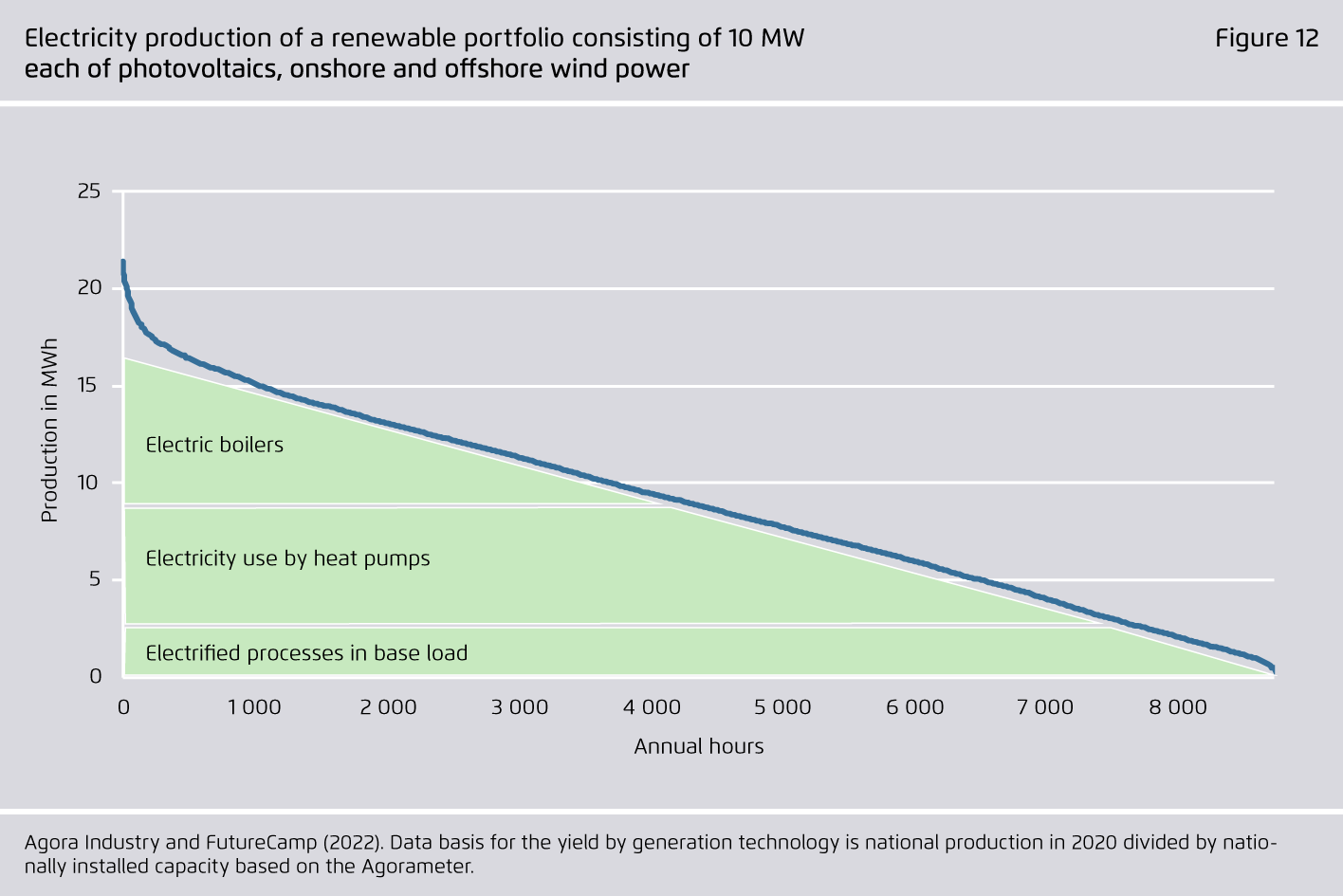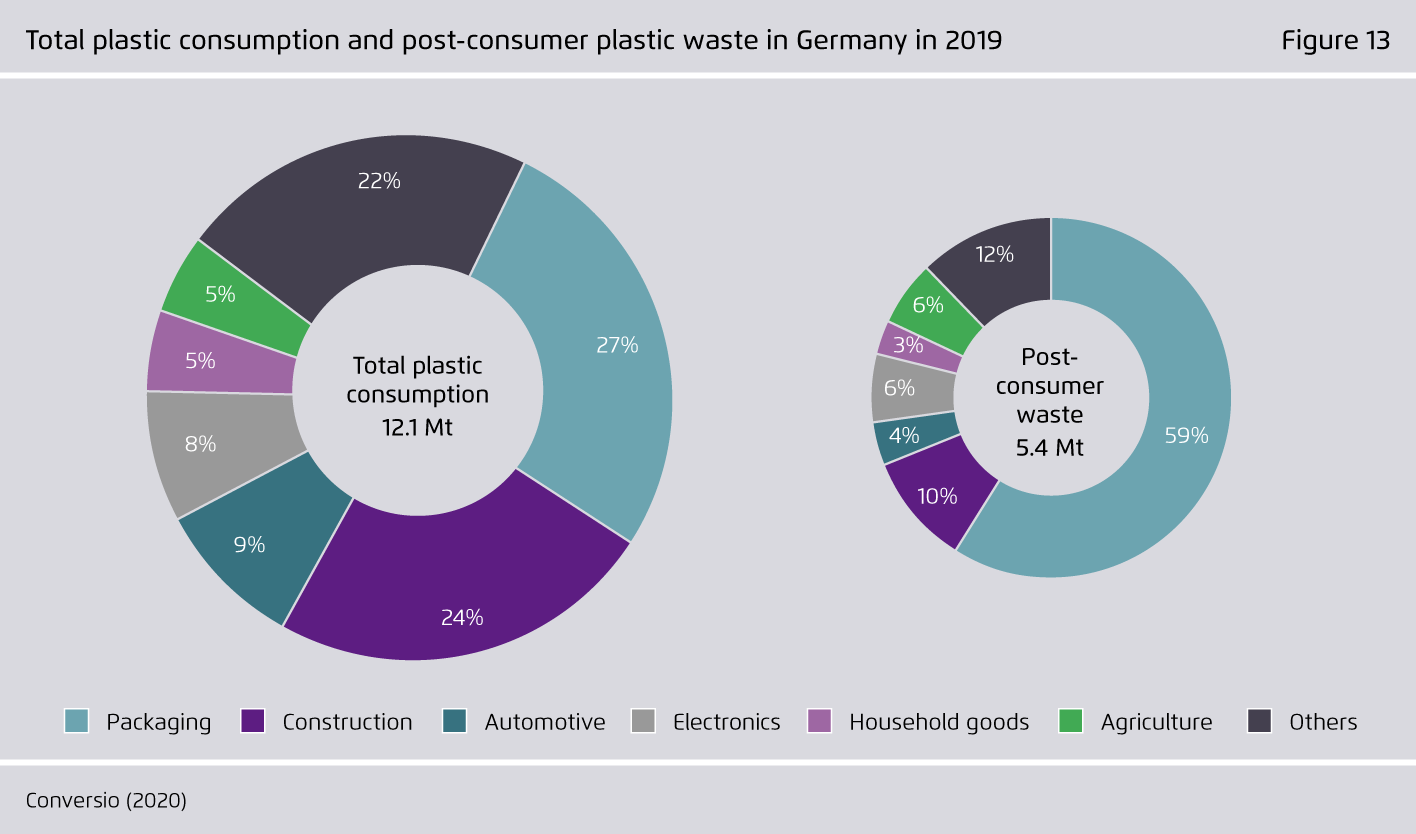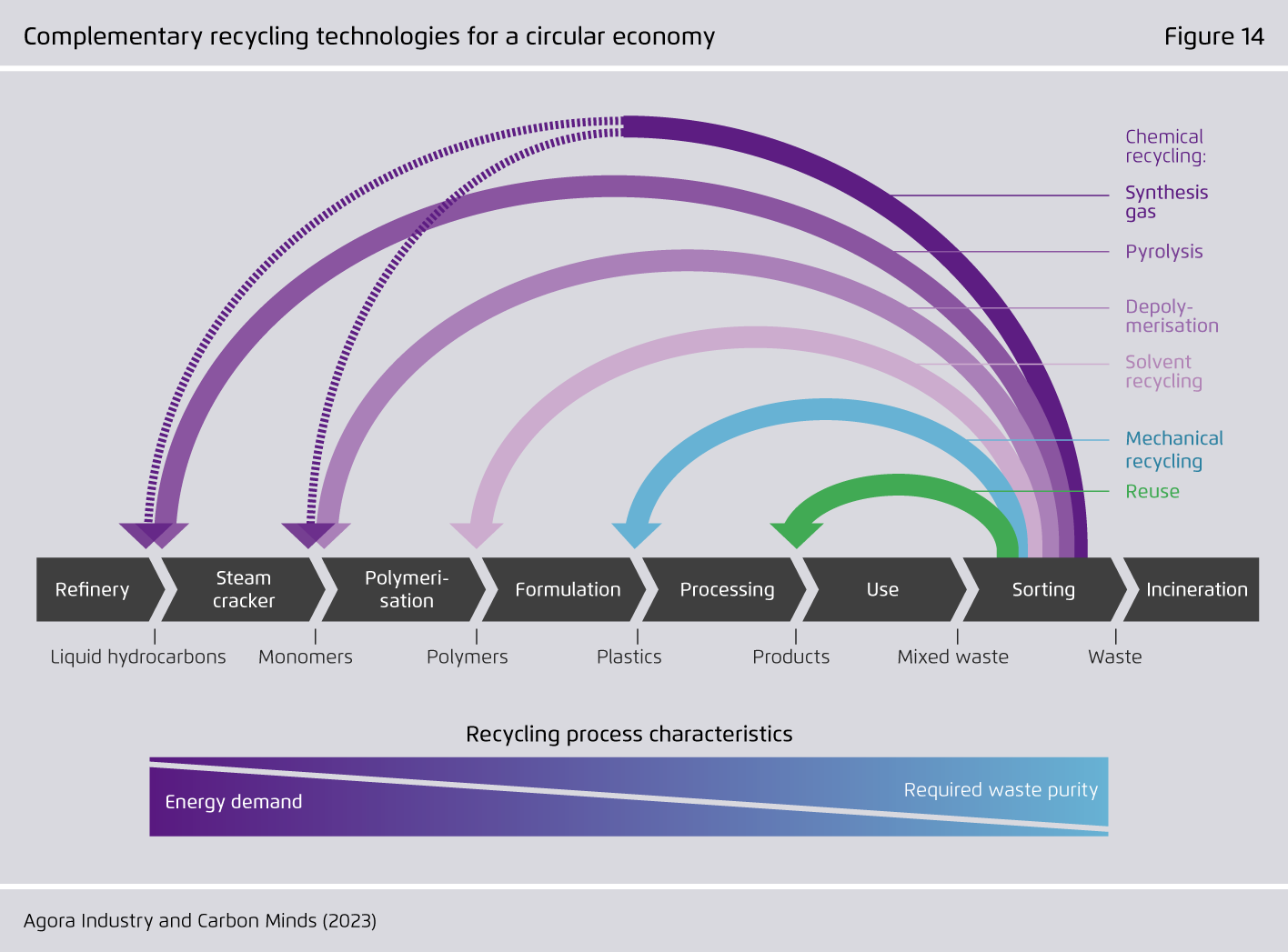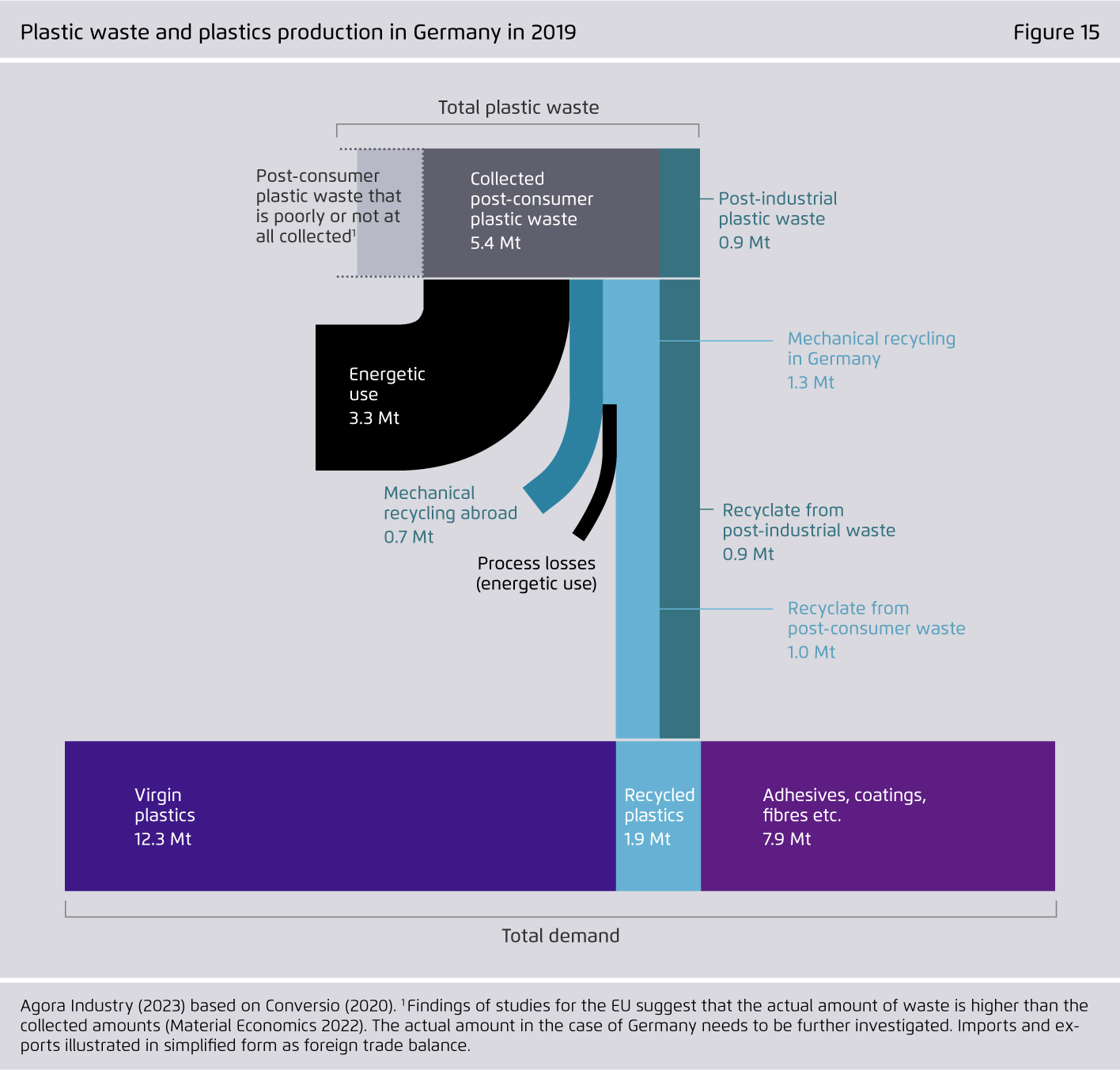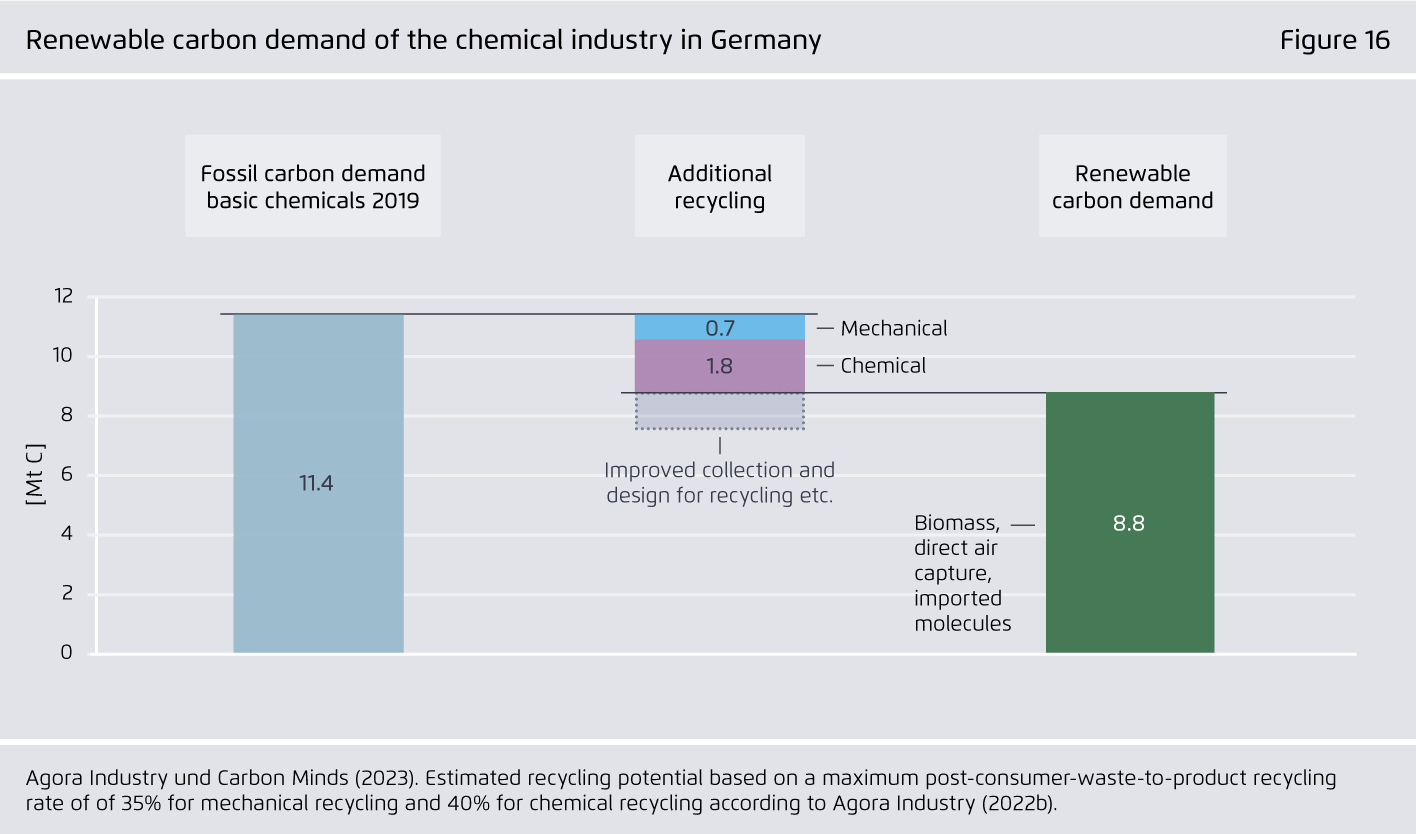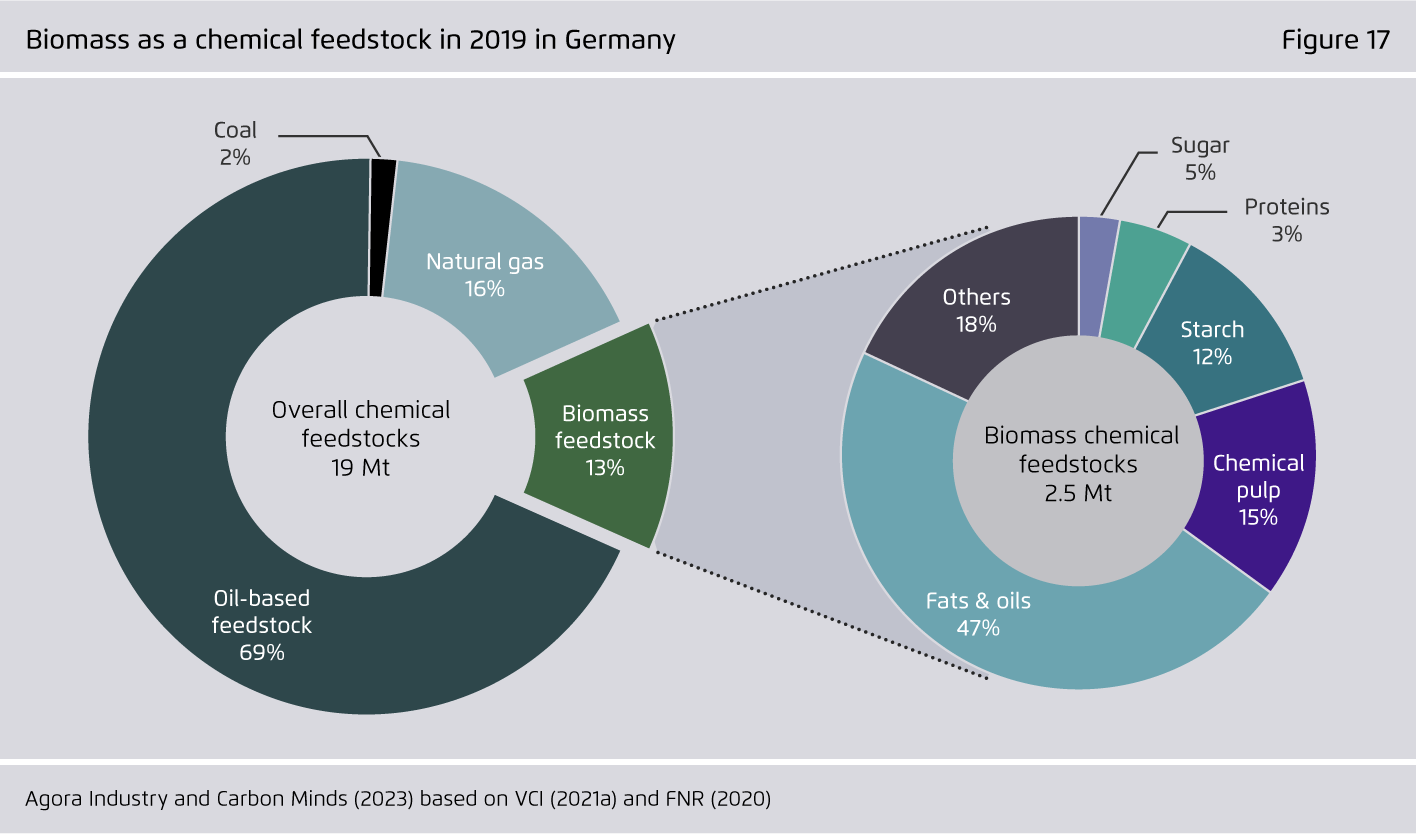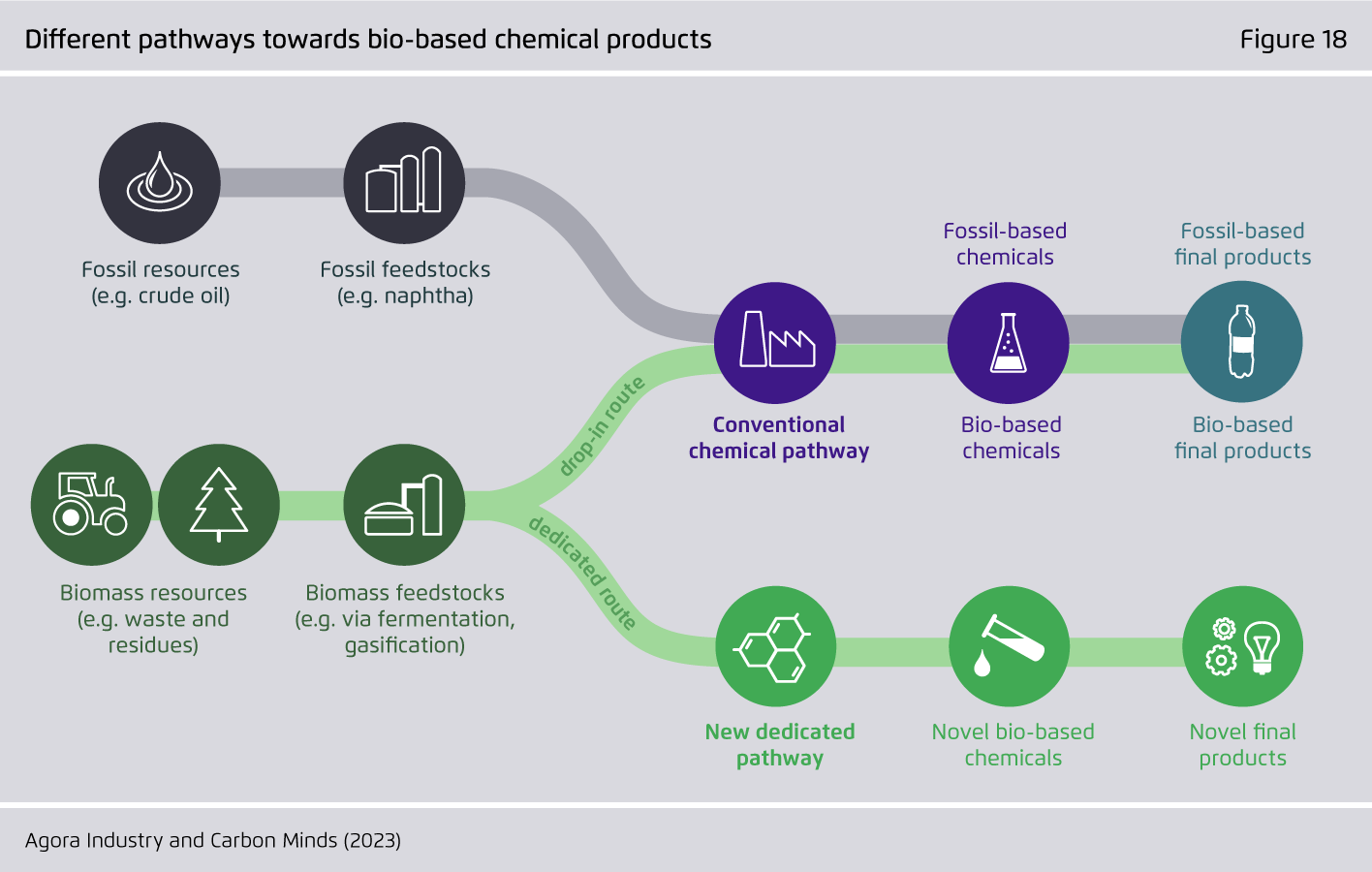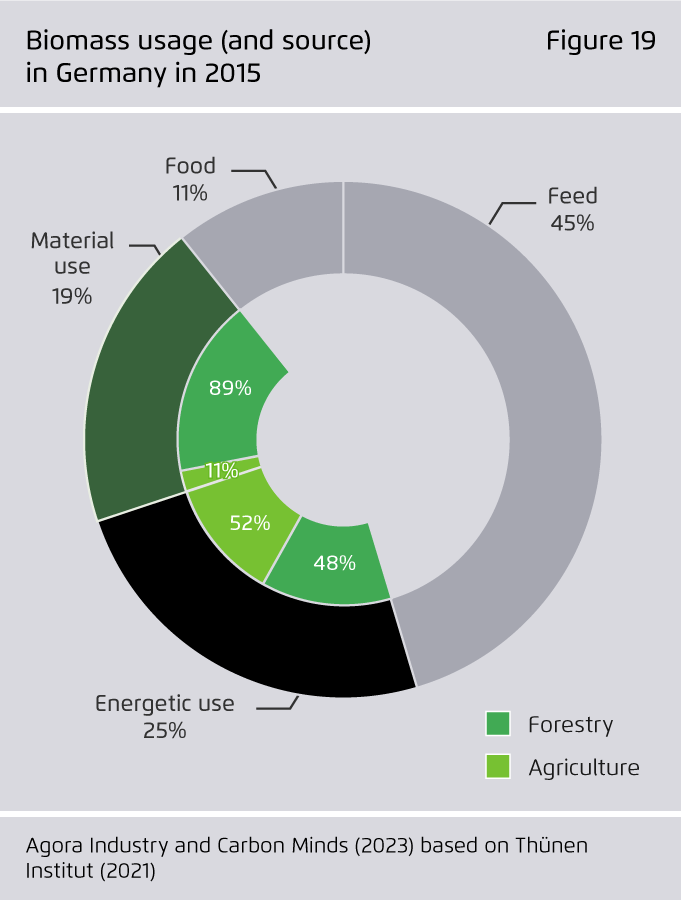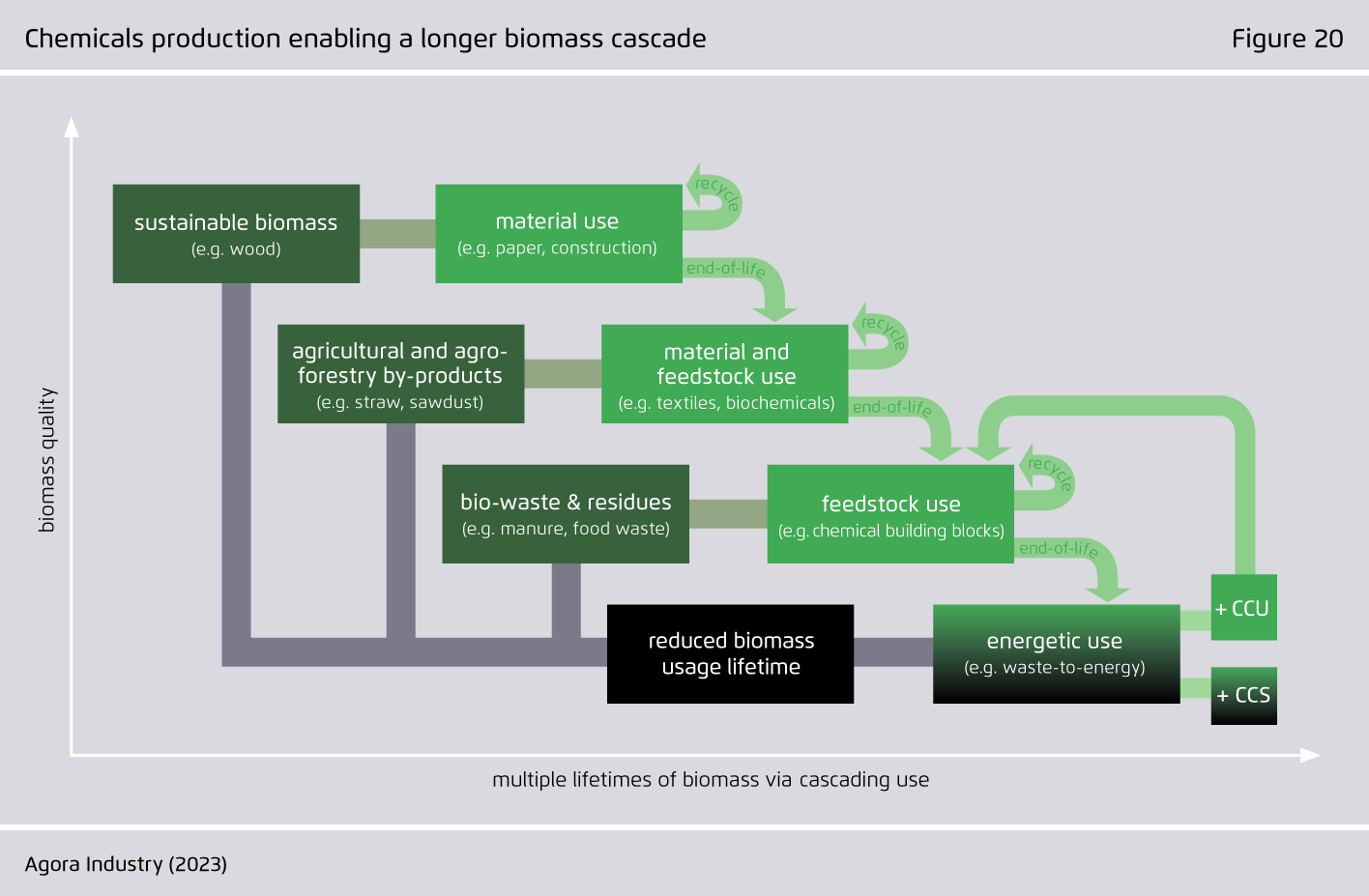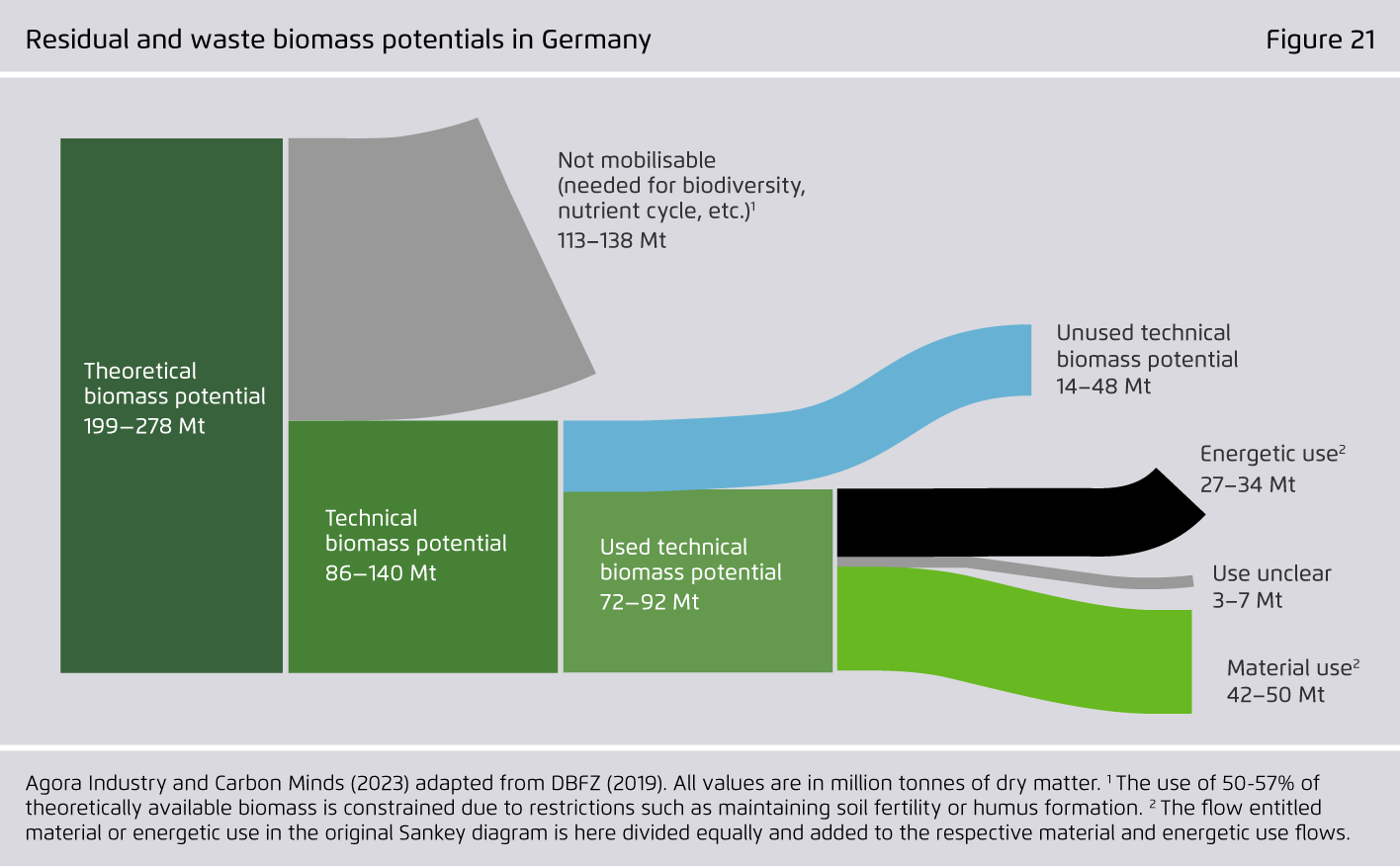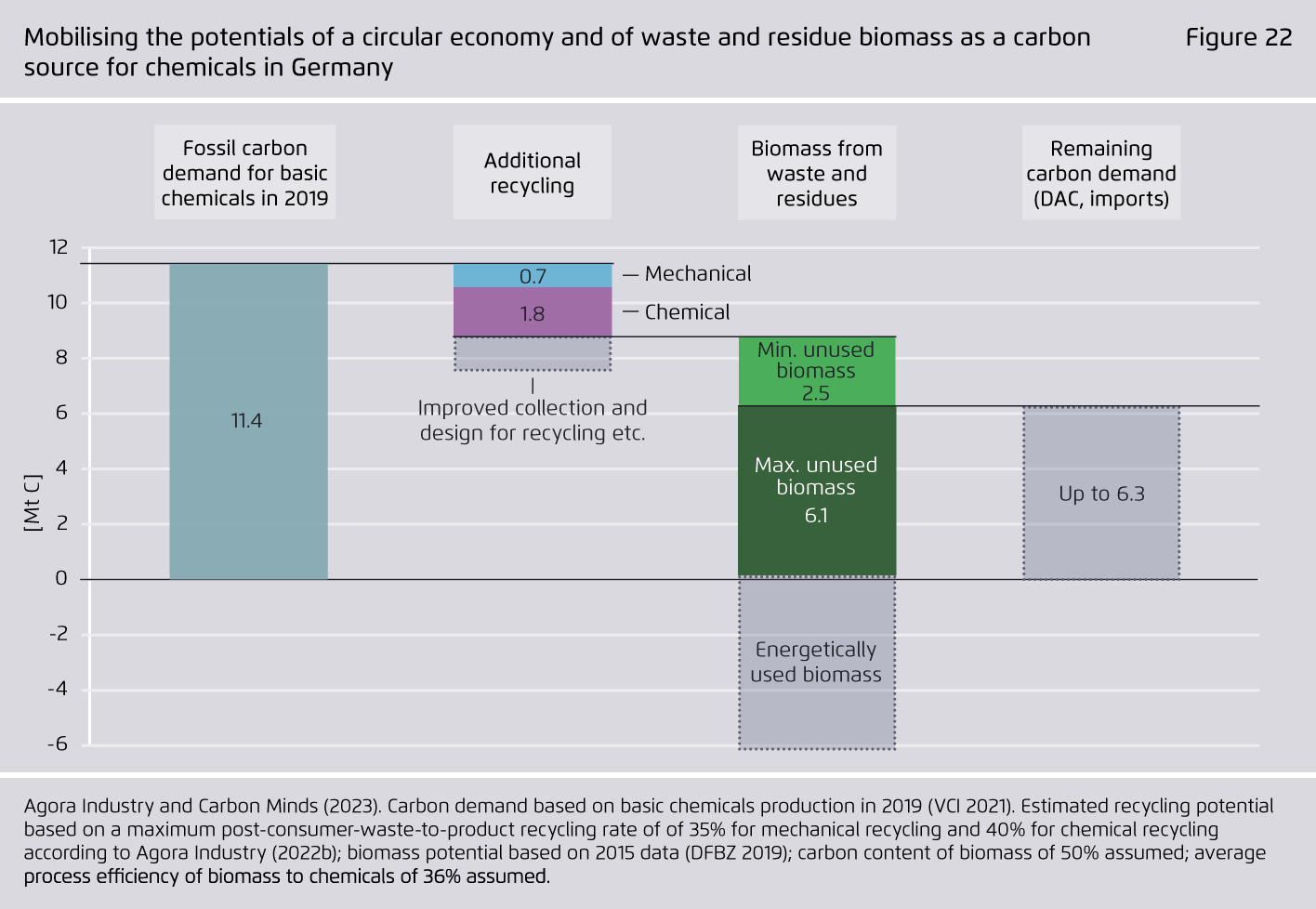-
High fossil energy prices and the reform of the EU ETS have increased the urgency for the transformation of the chemical industry: The sector needs to phase out its use of fossil fuels and be climate-neutral before 2040.
To maintain innovation, value creation and jobs in Europe, decisive action by companies and policy makers to enable the transition is needed.
-
The transition of the chemical sector must address all emissions along the entire value chain. More than half of the life-cycle emissions from chemicals occur after their use when they are disposed of and usually incinerated, releasing the carbon they contain into the atmosphere.
To unlockthe sector's potential to utilise and store carbon more sustainably, three parallel strategies are key: 1) the direct electrification of process heat; 2) a circular economy; and 3) replacing fossil with renewable feedstocks.
-
A policy mix of supply-side and demand-side measures for the chemical industry is needed to complement the ETS reform.
Investment support and technology standards create incentives for electrification. Mandatory quotas for recycled content will help to foster a more circular economy. In combination with prioritising uses that extend the lifetime of limited biomass resources, the additional demand for electricity and hydrogen can be reduced to a minimum.
-
To ensure the competitiveness of the chemical industry in a climate-neutral economy, the federal government should develop a detailed roadmap by the end of 2024, with the involvement of industry, trade unions, civil society and the scientific community.
A special focus must be placed on the transition of the particularly energy-intensive production of basic chemicals, which are the starting point of many subsequent value chains.
This content is also available in: German
Chemicals in transition
The three pillars for transforming chemical value chains

Preface
As the largest industrial consumer of fossil gas in Germany, the chemical sector has been hit severely by the scarcity of fossil gas and the high prices caused by the fossil energy crisis following Russia’s invasion of Ukraine. At the same time, this has opened a window in which to speed up the transformation necessary for achieving the climate targets for industry in 2030 and 2045 and to stay competitive in the global race for climate-neutral products and technologies.
So the chemical industry stands at a crossroads: It needs to develop a common pathway that takes into account the climate targets, limited domestic resources and the resilience of value chains, while maintainng the industry’s economic strength. At the same time, Germany and the EU must create an environment that fosters investment in the technologies of the future in order to maintain the innovative energy that is crucial for the economic strength of the sector and for delivering the key materials for a climate-neutral society.
This project contributes to developing such a transition pathway for a chemical industry that uses materials and resources efficiently, a pathway based on three key complementary strategies: direct electrification and flexibility, a circular economy and renewable feedstocks. Our study shows that an integrated approach can create cross-sectoral synergies for this transition and can eventually result in CO2 sinks – a climate-positive chemical value chain.
Key findings
Bibliographical data
Downloads
-
Main Report
pdf 1 MB
Chemicals in transition
The three pillars for transforming chemical value chains
All figures in this publication
Concept for a climate-positive chemical value chain based on direct electrification and flexibility, a circular economy and renewable feedstocks
Figure 1 from Chemicals in transition on page 5
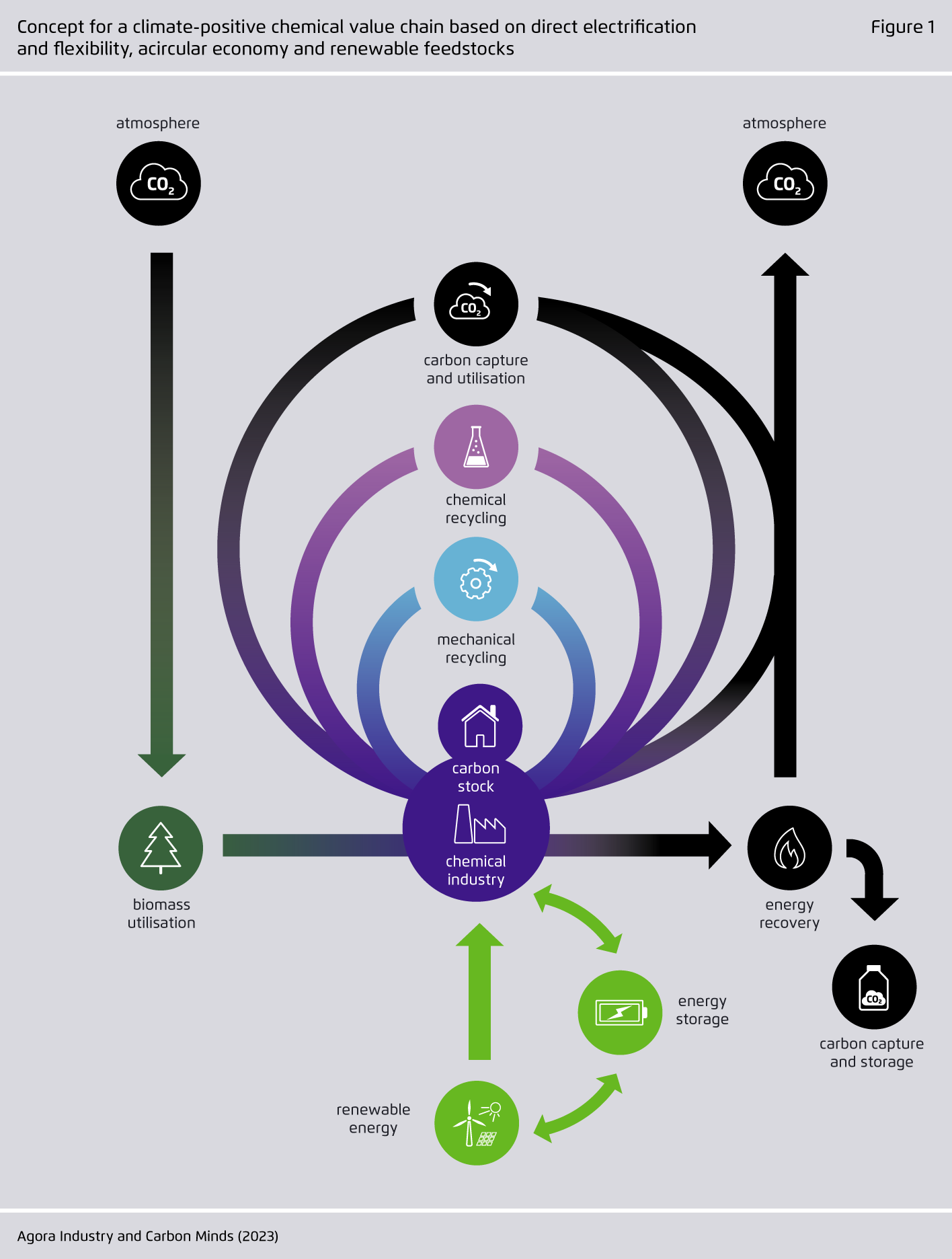
Use of chemical products in other sectors in Germany in 2019
Figure 2 from Chemicals in transition on page 9
